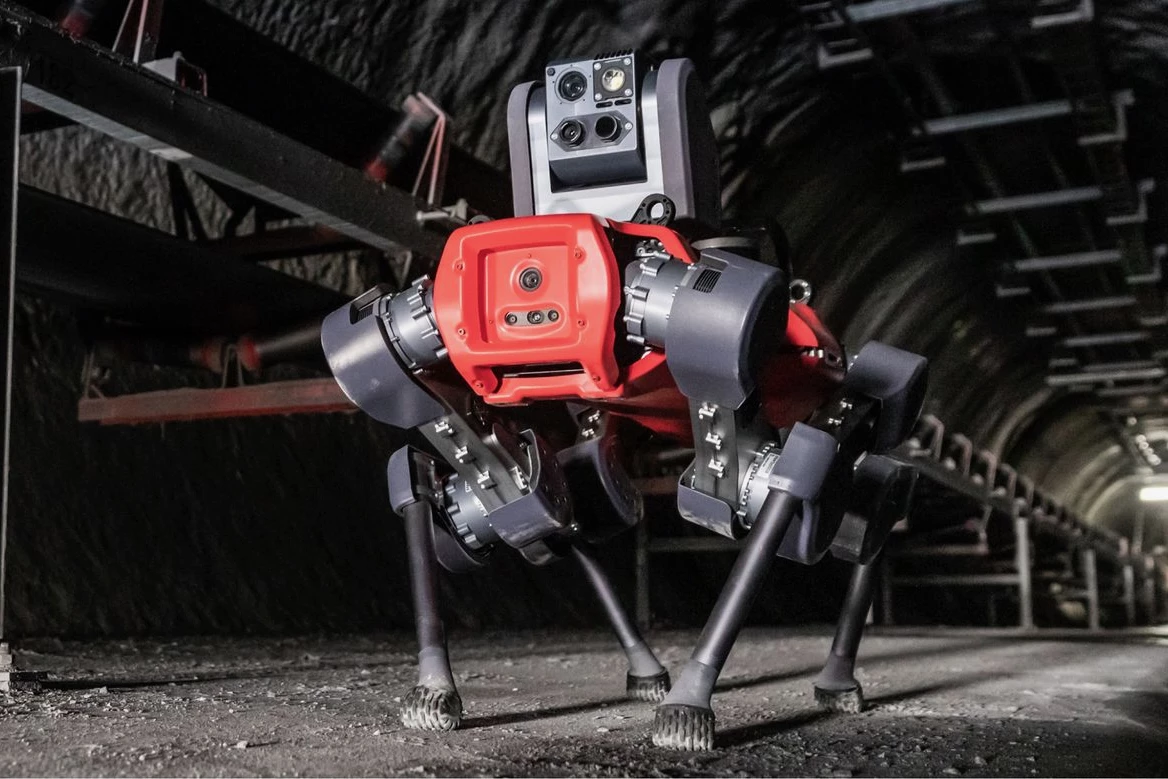The ANYmal quadruped robot not only walks on four legs, it can also roll on four wheels, stand up, throw boxes, and make its way up and down stairs. As if all that wasn't enough, the thing can now also climb ladders.
Created by engineers from the ETH Zurich research institute, the ANYmal first caught our attention back in 2017, when it developed the ability to use elevators in high-rise buildings. It has since become commercially available via ETH spinoff company ANYbotics. Another startup is marketing the wheeled version, which is now called the Swiss-Mile robot.
The current model of the ANYmal has a normal walking speed of 0.75 m (2.46 ft) per second, and can amble its way across indoor or outdoor terrain for 90 to 120 minutes per battery-charge. It's equipped with sensors such as a 360-degree lidar module, six depth-sensing cameras and two optical cameras, all of which feed data into two Intel 6-core processors.

All of this technology allows the robot to autonomously perform tasks like safety and security inspections in settings such as factories, gas plants, warehouses and even mines. Parts of all of those places are only accessible by ladders, which the stock ANYmal is unable to climb.
In order to address that shortcoming, a team led by ETH Zurich roboticists Dylan Vogel and Robert Baines started off by swapping an ANYmal robot's feet for four "hooked end effectors." These C-shaped appendages allow the bot to apply both compressive and tensile force to the rungs of a ladder. This means it can push down on lower rungs while simultaneously pulling its way up to higher ones, thus stabilizing it center of mass on the ladder while climbing it.

Those effectors aren't much good, however, if the robot doesn't know what to do with them. For this reason, the scientists utilized what is known as a "privileged teacher-student reinforcement learning approach."
In very simple terms, this involves training a virtual teacher using a computer model in which all the variables (such as the ladder angle and rung spacing) are known, while also training a virtual student that mimics the teacher’s behavior using nothing but chaotic "noisy" sensory information.
That virtual student – which knows what to do thanks to the teacher, and how to do it best thanks to its sensory data – is then incorporated into the software that the actual physical robot uses to climb ladders.
Utilizing this software in lab tests, the modified ANYmal had an overall 90% success rate at ascending ladders ranging in angle from 70 to 90 degrees. What's more, it climbed those ladders 232 times faster than any other ladder-climbing robot, bipedal or quadrupedal.
You can see the bot in action, in the video below.
Source: ETH Zurich Robotic Systems Lab via IEEE Spectrum




